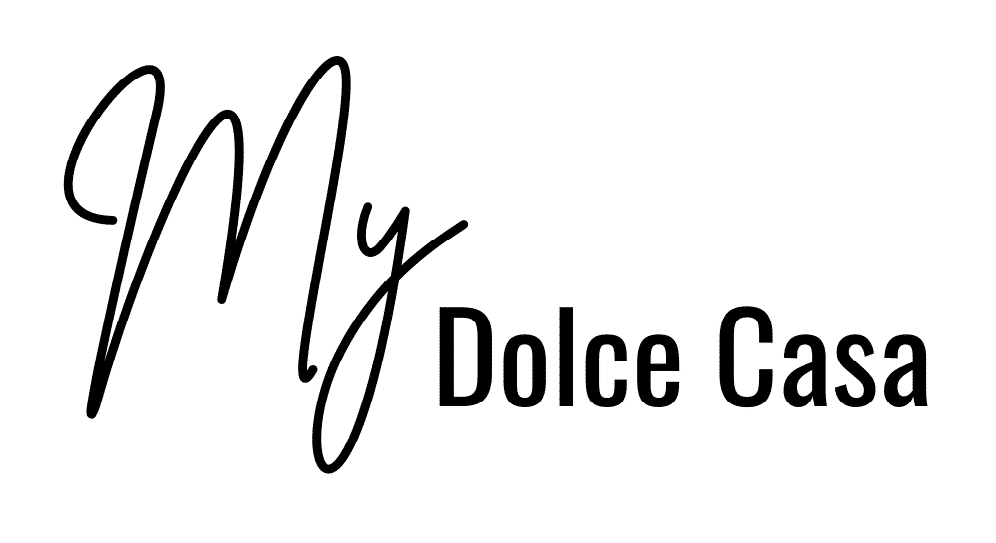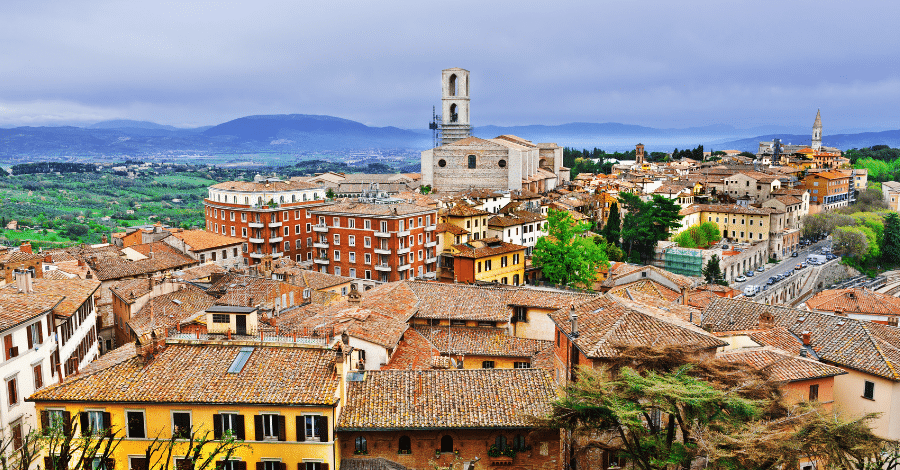Nestled in the heart of Italy, Umbria is one of the best regions to live in Italy and it has become especially popular with English-speaking expats. It often flies under the radar, overshadowed by its famous neighbors to the north and south. But, for anyone looking for an authentic Italian life experience, this region has a lot to offer.
This land-locked region has just about everything you dream of when you think of living in Italy: rolling hills lined with wineries and olive groves, cheap and delicious local food, beautiful lakes, and incredible festivals. We’ll take you through the pros and cons of living in Umbria and five unique towns that we rate as the best places to live in Umbria right now.

Things to look forward to in Umbria
Many locals believe Umbria is the next Tuscany, an exceptionally popular region, as the countryside is very similar to what makes the Tuscany region really popular. The best part is that homes come at a fraction of the cost.
In fact, Umbria is the 4th cheapest region in the country, with homes averaging around $220,000 or $110 a square foot. You can also find apartments insanely cheap, too, with an average price of $88,000.
Umbria also borders Lazio and Tuscany, so there’s always plenty to do if you want to go to larger cities like Rome or Florence. Some towns are less than an hour away from Rome, and the homes cost a fraction of what you would pay in the big city.
One nickname is “The Green Heart of Italy,” and you’ll find mountains, lakes, rivers, olive groves, vineyards, and endless hills in the area. You’ll find charming villages perched on top of hills, with narrow stone roads, incredible views like the human-made Marmore Falls near Terni, vast nature parks, and picturesque lakes.

Perhaps surprisingly, Umbria’s cultural scene is vibrant and diverse. In the summer, towns throughout the region host jazz festivals, with the main event in Perugia. The jazz festivals in Umbria have hosted famous names like B.B. King, Elton John, and more.
The area also features incredible history, with many of the towns built on hills throughout the region built by Etruscans, conquered by Romans, and inhabited for millennia.
Food-wise, the region is most famous for its black truffles, wild boar, and rich sauces.
Downsides to living in Umbria
Unfortunately, for many smaller cities in Umbria, the job market isn’t the best, especially if you don’t speak Italian. To make things worse, the wages are fairly low. You’ll want to have a job or steady income lined up if you’re interested in moving to this part of the country.
As a poorer and smaller region, many parts of Umbria are isolated. Infrastructure like public transportation that you’ll get in bigger cities isn’t readily available, so you may need a car in some instances.

On top of this, many of the cities have underfunded and understaffed local government agencies. As mentioned in almost every article about Italy, the bureaucratic processes in Umbria, much like elsewhere in Italy, are overwhelming.
5. Gubbio
Gubbio is famous to many Italians, as St. Francis saved the city. The saint tamed a wolf that terrorized the city, a story so impressive that it’s taught to children throughout Italy. But the Catholic saint did much more than that in Gubbio, where he was accepted after leaving Assisi to care for the poor and the ostracized.
Gubbio is a hidden gem of Umbria, and this is saying a lot for such an undervalued region. Though the city has a rich history and importance in the Catholic church, the town remains relatively untouched by the huge flocks of tourists.

The charming medieval town offers a unique blend of history, culture, and community spirit. White and tan brick buildings line cobblestone streets, which all surround a picturesque view of the surrounding hills and the backdrop of Mt. Ingino.
With homes prices averaging about $194,000, you’ll find many homes inside the tiny city walls and villas in the surrounding hills.
Like so many small towns in Italy, Gubbio loves to welcome visitors with its amazing food. Besides truffles and wild boar or duck with ragu sauce, you can find torta al testo, bread stuffed with your filling of choice.
The town hosts a ton of festivals throughout the year, like the Corso dei Ceri, an Umbrian version of the Running of the Bulls, the lighting of the largest Christmas tree in the world on Mt. Ingino, and more. You can also take a ride in Gubbio’s open-air ‘bird cages’ funicular for a view of the town and visit the impressive Roman Theatre dating back to 20 BC.
With a population of just over 30,000, you’ll find the town quite quiet and peaceful. But with so few people comes the downsides. You won’t find as many amenities and services as you would in larger towns.
The worst part of the town is how hard it is to get in and out of it, especially if you want to travel throughout the country. Though Perugia is just over an hour by bus from the Gubbio town center, relying on buses throughout the country is tricky, to say the least.
However, if you’re looking for an authentic small-town Italian lifestyle, Gubbio is a great choice.
4. Orvieto
Perched on a high panoramic bluff just 90 minutes north of Rome, Orvieto is a stunning city with a rich history dating back to the ancient Etruscans. With a population of about 21,000, this slow city offers a relaxed and easy living environment, making it an ideal retirement destination.
Orvieto’s location provides excellent transport connections, allowing residents to reach Rome in about an hour and Florence in about two hours by train or car.
More importantly, though, is that Orvieto boasts a rich artistic and cultural heritage. The town’s unique center was built on top of a steep hill by Etruscans in the 8th century B.C. as an area where farmers could escape from invaders.

Since then, Romans conquered and added their famous cobblestones and architecture that gives the town its unique charm that still holds today. You’ll also be able to explore the city’s underground caves, wells, and tunnels, offering a unique perspective on its history.
Of course, you’ll find the city has a vibrant culinary scene with a variety of restaurants, cafes, and wine bars. Residents can savor the local cuisine known for its hearty, authentic flavors, often involving truffles, game meat, and amazing plates of pasta. On top of this, you’ll find many incredible wineries outside of the town on the hills and valleys below.
On the downside, though, is that you’ll find the homes in this area more expensive than most in the region. The average price for a house is around $346,000, but this is perhaps because the town is tightly quartered.
Also, some of the homes outside the city center are huge multi-million-dollar villas. You can likely find homes in the area outside of the town for much more affordable prices.
3. Spoleto
Spoleto, located in the green heart of Italy’s Umbria region, is a charming town that offers a relaxed life amid ancient splendor. Like Orvieto, Spoleto has a deep historical significance, with its center dating back to 241 BC.
Today, you’ll find elegant shops, restaurants serving typical Umbrian cuisine, and amazing festivals throughout the year on these same cobbled roads. Though the town offers modern comforts, there are still plenty of historical locations you can find, like the Rocca Albornoziana, a medieval fortress that offers panoramic views of the city.

If you’re a fan of the outdoors, there are tons of hiking trails on the hills and mountainsides around the city. On these trails, you’ll wander through olive groves, vineyards, and even the Ponte delle Torri, a pedestrian-only arched bridge. Along the way, you’ll find even more panoramic views of the surrounding towns, each more beautiful than the last.
Spoleto’s home prices are surprisingly high compared to many others on this list, with prices averaging around $246,000. However, the town is surprisingly well-connected, only a one-hour train ride to the center of Rome.
And similar to Gubbio, Spoleto is a very tight-knit, friendly community. With just over 30,000 residents and few foreign tourists, this is a great town to escape from the bustling bigger cities. However, you’ll find certain amenities and services may not be as conveniently available as in other cities.
2. Terni
In direct opposition to many of the towns on this list, Terni doesn’t offer a beautiful, traditional medieval town center. Instead, the city takes pride in its industrial history, nicknaming itself the “Steel City.”
Despite its nickname and industrious nature, the town is still located in one of Italy’s most beautiful areas. You’ll find tons of hikes in the surrounding hills along nature trails that lead all the way to Lago di Piediluco or the breathtaking Marmore Falls.

Another thing the town has going for it is that it still has a “bigger town” feel, though not quite as much as Rome. A large pedestrian-only city center has popular shops, osterias, and cafes.
The train to the center of Rome is just less than an hour, making it an excellent option for anyone who wants to commute for work. With home prices averaging around $200,000, you’ll definitely be able to live here cheaper compared to neighboring cities.
On the downside, though, the town isn’t the biggest party city in the country. With a population of over 100,000, you’d think there’d be more nightlife, but as a mainly commuter city with families and an aging population, you may not like Terni if you don’t like to go to bed early.
1. Perugia
Perugia tops our list of best places to live in Umbria for a multitude of reasons. The town is a strange mixture of the old and the new, with cute mini-metro cars and electric escalators taking you up the hillside to the medieval city, where you can find an ancient Roman aqueduct cutting through the center of town.
As a major city, home prices are higher than others, averaging around $234,000. However, if you compare that to bigger cities like Rome or Florence, this price pales in comparison.
The town is a popular destination for digital nomads, situated in the heart of Italy. For many, Perugia serves as an excellent base for exploring the rest of the country. Its central train station is two-and-a-half hours from Termini station in Rome and two hours from Florence by train.
Perugia is also the biggest city on our list at 170,000 people, with a sizable portion of these students at the universities in the city. This adds a vibrant cultural scene, with live music, art exhibits, and events happening often.

Also, Perugia has a solid expat community. You can find tons of activities and groups in the city. Book clubs, hiking, language exchange, biking, and festivals are just a few of the activities you can find through social media groups and online forums.
All of this happens with a backdrop of the Italian hillside in a town with a rich architectural history.
On the downside, Perugia is probably the “rougher” of the towns on our list, probably due to the dense population. Plus, this is perhaps the most visited town by foreign tourists, and its festivals bring in tons of out-of-towners. You may want to look elsewhere if you’re looking for a quiet Italian atmosphere.

